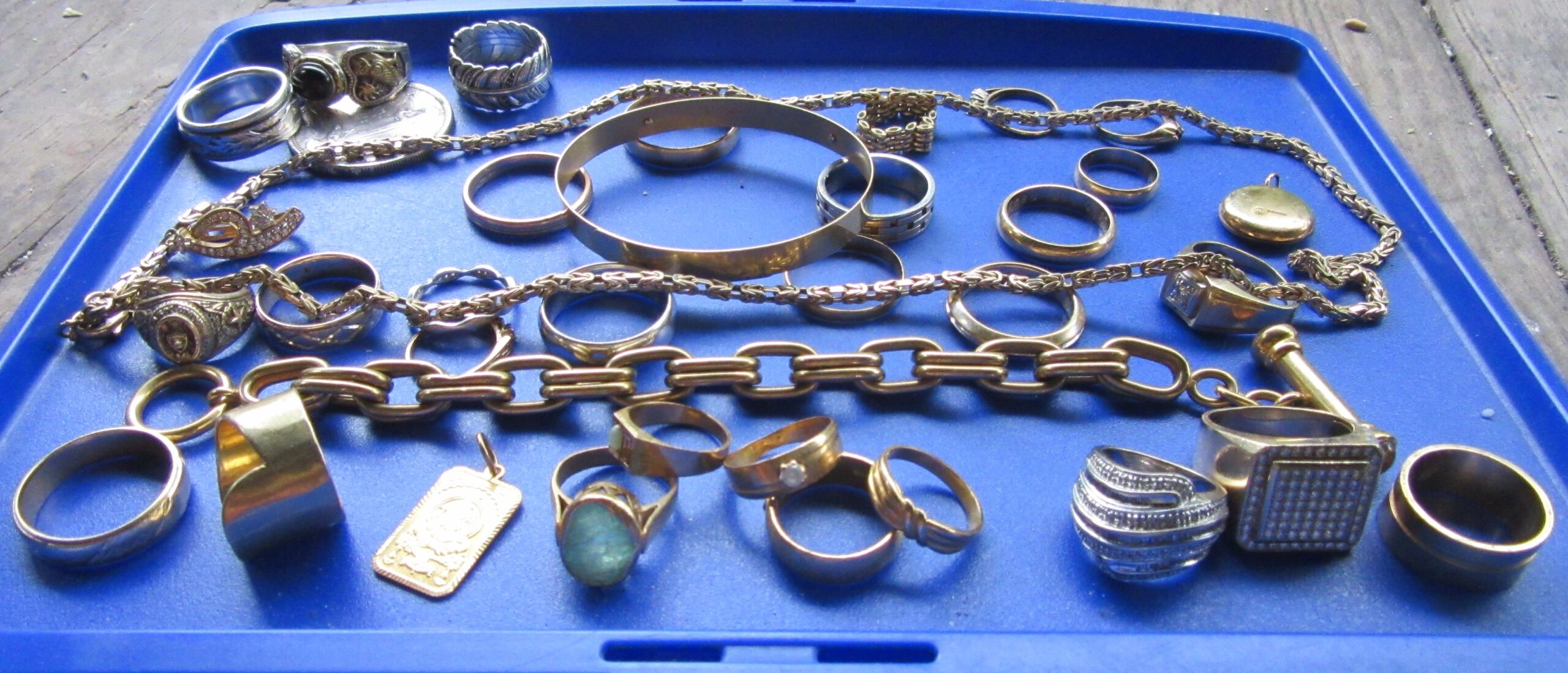Book Excerpt: Equinox Operating Characteristics:
Extreme High Gain.
These detectors all have what borders on gold field capability–responding to very small targets. Their modulated audio acts to make these small objects sound bigger. As well, though some iron can be brought up to sound like its non-ferrous–especially if it has a ferrous component–as do bottlecaps. Many hunters who are new to this type of machine are confused as to how some of these caps may respond in various places in the conductive range.
As well, these machines have so much “Sensitivity” that they can produce unstable target ID’s. This is why we see the Equinox with a narrow (-9 to +40) ID scale–to offset these “wild” readings.
In looking for a way to illustrate just what high gain does to the operating characteristics of a detector, one telling demonstration comes to mind. With a less sensitive machine, when you hear a response and then go to the cross sweep—it’s usually more or less the same. With the extreme “Sensitivity” of a high gain detector like the Equinox, it’s possible to hear a response, go to the cross sweep and have it disappear completely–because the machine was responding to the difference between the ground and target or some configuration of the object’s shape. This high gain “punch” needs special methods to be managed accurately. You could say that with this “hopped up” circuitry, the ground’s signal plays a much bigger role in what you hear though the headphones. I’ve heard them termed “sparky”–an accurate description.

Picture shows some of the author’s gold finds from the last year using the Equinox and several other Detectors.
Precise Reporting
While lots of older detectors have precise reporting, what’s new with these machines is that they operate at such a high electronic standard and speed of processing that they actually report within targets. In the Minelab literature on the Equinox this is termed “resolution”– that is, the machine bases its identification upon a very large number of “data points.” So an alloyed metal object will give readings that represent all of the metals that are present in it. Another way to put this is that the detector is so accurate that it actually “splits” targets. A ferrous / non-ferrous blend like a bottle cap may show only the non-ferrous portion, a scattered mix of both types of metal or a reading that represents how corroded it is–what’s left of the non-ferrous portion. In effect the detector is reading an interaction between ground and metal. Understanding this point is the key to developing your accuracy with the Equinox.
With the Equinox, some have called this an “unstable” meter. However this highly accurate reporting can also be used to advantage–pointing you to the best, “cleanest” signals in just about any trash-strewn conditions. More on this later.
From: “The Minelab Equinox: From Beginner to Advanced”
by Clive James Clynick